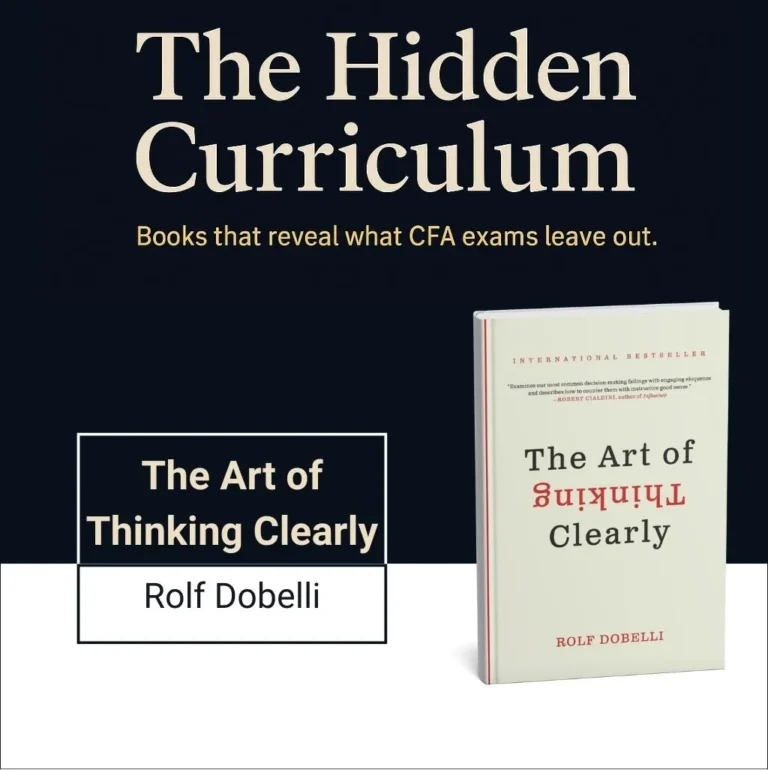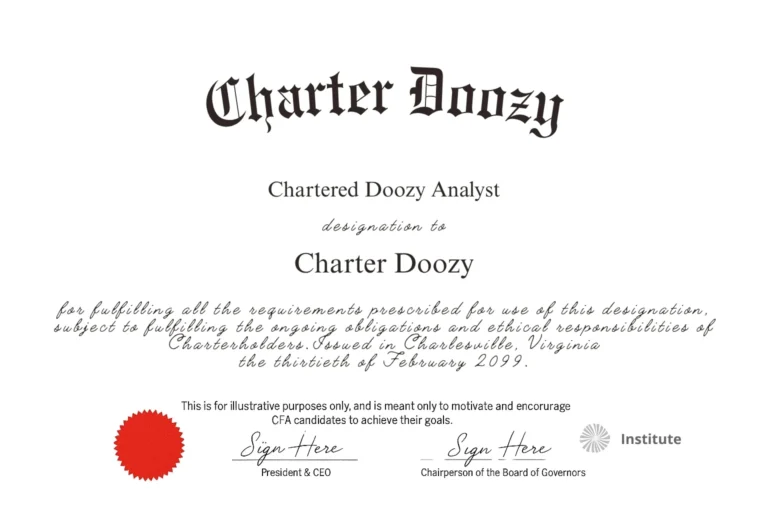The Art of Thinking Clearly by Rolf Dobelli
Hidden Lesson: You are not as rational as you think—and unless you actively counter your biases, your analytical horsepower will drive you straight into bad decisions.
What the CFA Curriculum Teaches You
The CFA Program teaches you how to calculate risk, not how to feel it. It trains you to build discounted cash flow models, memorize formulas for kurtosis, and master the ethics of fair dealing. You’ll learn how to assess beta, construct portfolios, analyze financial statements, and understand efficient markets.
But here’s the catch: all of that assumes a rational decision-maker at the helm.
The CFA Institute mentions behavioral finance—mostly at Level III—but it treats it like an interesting appendix. A wrinkle. An exception. Not the rule.
And that’s the problem.

What The Art of Thinking Clearly Reveals Instead
Dobelli doesn’t care about your spreadsheets. He cares about your blind spots—the systemic, repeatable, invisible mental errors that sabotage even the smartest minds. This book is a punchy catalog of cognitive traps: confirmation bias, survivorship bias, sunk cost fallacy, authority bias… 99 of them, to be exact.
And reading it feels like someone is holding up a mirror you didn’t ask for.
In finance, we worship logic. But Dobelli shows us that logic is fragile. Your brain will justify holding a bad stock. It will chase prestige over purpose. It will confuse familiarity with accuracy and momentum with insight. It’ll prefer to look rational than be rational.
And unless you deliberately train yourself to question your thinking—not just your data—you’re not investing, you’re guessing.
Real-World Trigger
Imagine you’re three years into your analyst role at a fund. You’re known for being sharp, meticulous, and well-read. But you’ve gotten emotionally attached to a position you pitched six months ago. The fundamentals have changed, but you don’t want to admit it. You double down instead.
Or you get caught up in the hype of a new asset class—crypto, AI, ESG, whatever’s hot—and convince yourself that this time is different.
Or maybe, as a CFA candidate, you choose a study provider based on a friend’s glowing review… despite a mountain of evidence that it’s not working for you.
That’s not a knowledge problem. It’s a thinking problem.
Dobelli would call it commitment bias, social proof, and confirmation bias—all in one.
And guess what? The market doesn’t care how smart you felt when you made the decision. Only what it cost you.
Why This Book Still Matters
Because in the real world, your biggest risks are not the ones in your model.
Your CFA letters will prove you can think rigorously. But Dobelli teaches you how to think clearly. And clarity is what protects you when pressure, politics, pride, or panic cloud the picture.
Every bad investment decision, failed client relationship, or career misstep I’ve seen up close could have been avoided with clearer thinking. Not more knowledge—just better judgment.
And judgment isn’t a skill. It’s a habit.
Reflection for CFA Candidates
- Are you learning how to think, or just what to know?
- Where in your study, work, or personal life might you be rationalizing instead of reasoning?
- Which cognitive bias do you suspect might be quietly sabotaging your CFA preparation?
Final Thought
If you’re grinding toward the CFA Charter thinking more content will make you smarter, The Art of Thinking Clearly is your wake-up call.
It’s not the hours you put in.
It’s the quality of thought you bring to them.
So maybe—just maybe—skip the next mock exam.
And read this instead.

